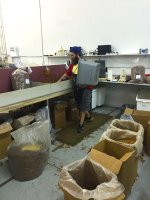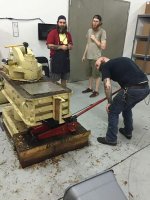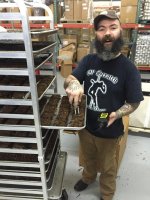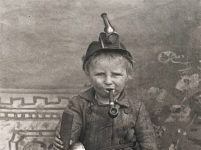Bit of an ‘elephant in the room’ when you consider the numerous & never ending posts concerning mould in mostly American tins & jars. Having noticed the penchant most American pipesmokers have for large beards, I wonder if the two are connected?

I should say that about 10 years ago I bought a large variety of aged American tins from pipestud. McClellands, C&D & GL Pease, no trace of mould in any of them. The only time I’ve discovered mould in a freshly opened tin or pouch was in two consecutive pouches of Germain’s brown flake, several years ago. Most cases of mould forming after the tins being opened & transferred to jars, can be justifiably blamed on the smoker themselves or their surroundings. Dirty hands, jars or airborne bacteria etc. There does seem to be a disproportionate number of cases of mould in freshly opened tins though, which makes you wonder. Do ‘beard nets’ help prevent the spread of bacteria in the workplace? Do bearded tobacco blenders wear such things? If they don’t, perhaps they should? Copied these photos off the internet, showing lots of beards at C&D, but no beard nets.




Beard swabs yield 'disturbing' results
Some were as dirty as toilets, microbiologists says.
www.usatoday.com
I should say that about 10 years ago I bought a large variety of aged American tins from pipestud. McClellands, C&D & GL Pease, no trace of mould in any of them. The only time I’ve discovered mould in a freshly opened tin or pouch was in two consecutive pouches of Germain’s brown flake, several years ago. Most cases of mould forming after the tins being opened & transferred to jars, can be justifiably blamed on the smoker themselves or their surroundings. Dirty hands, jars or airborne bacteria etc. There does seem to be a disproportionate number of cases of mould in freshly opened tins though, which makes you wonder. Do ‘beard nets’ help prevent the spread of bacteria in the workplace? Do bearded tobacco blenders wear such things? If they don’t, perhaps they should? Copied these photos off the internet, showing lots of beards at C&D, but no beard nets.













